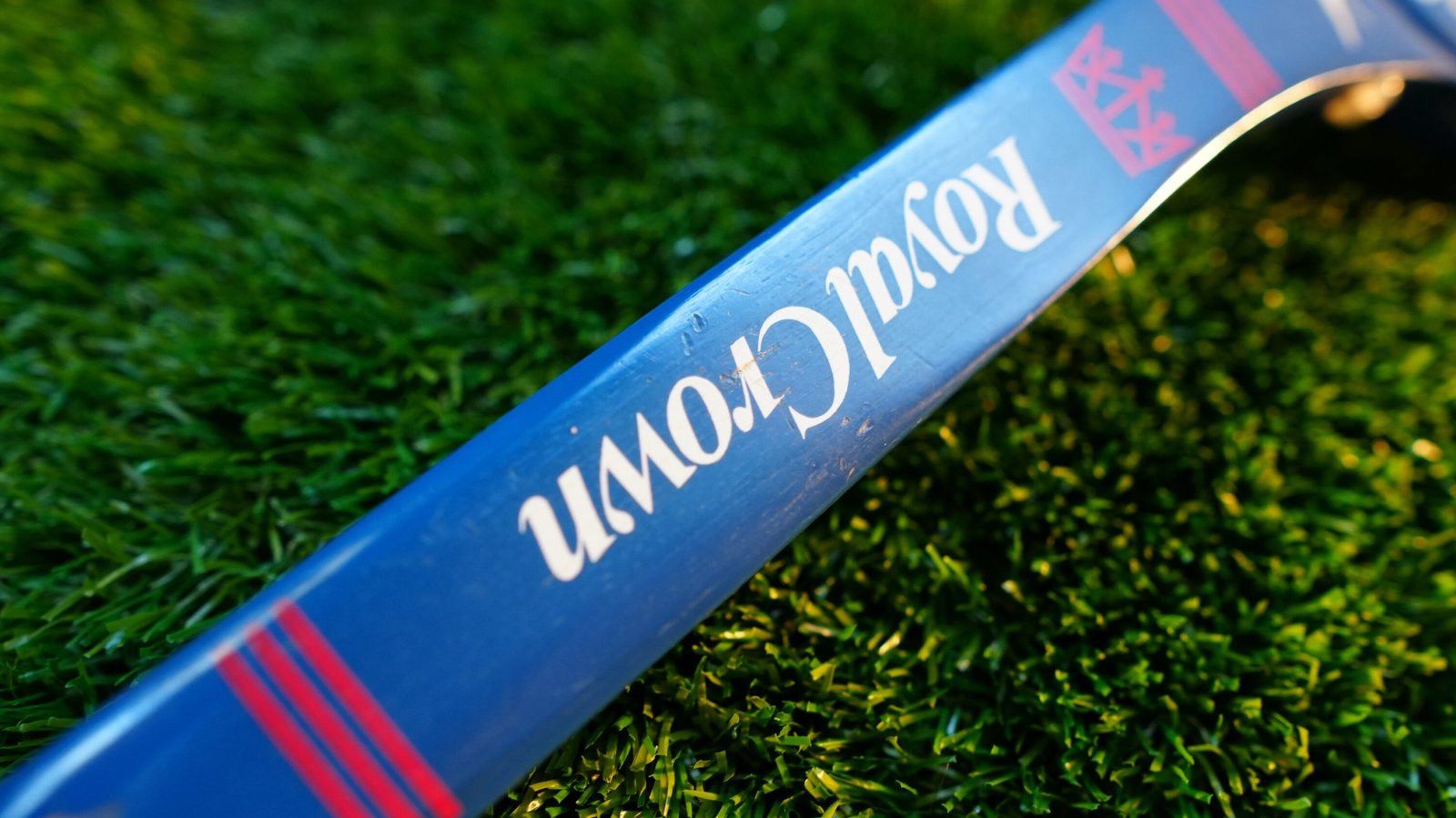Condition
7
10: New
9: Mint
8: Excellent
7: Good
6: Fair
5: Average
4: Below Average
3: Poor
|
Rarity
5
10: Impossibly rare
9: Extremely rare
8: Hard to find
7: Fairly rare
6: Uncommon
5: Common
<4: Big Seller
9: Mint
8: Excellent
7: Good
6: Fair
5: Average
4: Below Average
3: Poor
9: Extremely rare
8: Hard to find
7: Fairly rare
6: Uncommon
5: Common
<4: Big Seller
– – – – – – – – – – –
About This Racket
This racket was priced at 59 shillings (£3) in 1964 and was at the lower end of the Range. In the same advert was Eclipse (69 shillings), Princes (89 shillings) and Victory (£5). This is a much later model, likely the 3rd or 4th reissue dated to around 1980 when the fashion was to entirely paint the racket. Not my favourite, but still worth seeing.
Historic Gallery
Specifications (👋 not yet accurate….check back soon)
| Measurements | Value | Performance | Score |
|---|---|---|---|
| Weight | 394g | Power | 33/100 |
| Head Size & Length | 68sq in | 27inch | Control | 28/100 |
| Balance | 8pt head light (220) | Spin | 26/100 |
| Grip | Perforated leather | Handling | 30/100 |
| Strings | 18 x 20 | gut | Comfort | 49/100 |
| Flexibility | RA 49 | Consistency | 33/100 |
About Slazenger
While Slazenger began producing tennis balls in 1877, it became the official Wimbledon ball supplier in 1902, a partnership lasting over a century. The company also expanded internationally, establishing a significant presence in Australia by the early 1900s. In 1928, they opened an Australian factory for rackets and later added cricket bats, overcoming challenges like a 1932 factory fire and a late 1990s hailstorm.Slazenger was known for innovations like the “Floating Power” rackets in the 1930s, using mercury to enhance weight distribution, and introduced the “Challenge” racket post-WWII, popular until the mid-1970s. Their aggressive marketing strategies included player endorsements and junior development programs, maintaining visibility and promoting their products. In 1959, Dunlop acquired Slazenger, allowing it to operate independently, and between 1960 and 1973, Slazenger rackets won many Grand Slam events. However, by the mid-1980s, competitive pressures led to the cessation of racket production in Australia, shifting manufacturing to Asia.
Gallery
Timeline of Slazenger
| YEAR | EVENT |
|---|---|
| 1877 | Slazenger tennis balls production begins. |
| 1881 | Ralph and Albert Slazenger establish a shop in London. |
| 1883 | Slazenger files a patent for a table tennis net. |
| 1885 | Slazenger begins promoting sporting goods. |
| 1889 | Captain Ralph Slazenger visits Australia. |
| 1902 | Slazenger becomes the official tennis ball supplier for Wimbledon. |
| 1910 | Slazenger and Sons becomes a public company. |
| 1928 | Slazenger opens an Australian factory in Sydney. |
| 1931 | Slazenger acquires H. Gradidge and Sons. |
| 1939 | Slazenger acquires William Sykes Ltd. |
| 1942 | Slazenger acquires F. H. Ayres. |
| 1940 | Slazenger factory bombed during the Blitz. |
| 1958 | Dunlop acquires Slazenger, allowing it to run independently. |
| 1959 | Ralph Slazenger Jr. sells the family business to Dunlop Rubber. |
| 1960-1973 | Slazenger racquets win 38 of 112 Grand Slam events. |
| 1965 | Slazenger Championship No.1 tennis racket launched. |
| 1980s | Rise of metal and composite tennis racquets. |
| Mid-1980s | Slazenger ceases racquet production in Australia. |
| 1985 | Dunlop Rubber purchased by BTR plc; forms Dunlop Slazenger Sports Group. |
| 1996 | BTR sells Dunlop Sport in a management buyout; new company named “Dunlop Slazenger”. |
| 2002 | Slazenger Barnsley plant closes; production moves to the Philippines. |
| 2004 | CINVen sells Dunlop Slazenger to Sports Direct International. |








